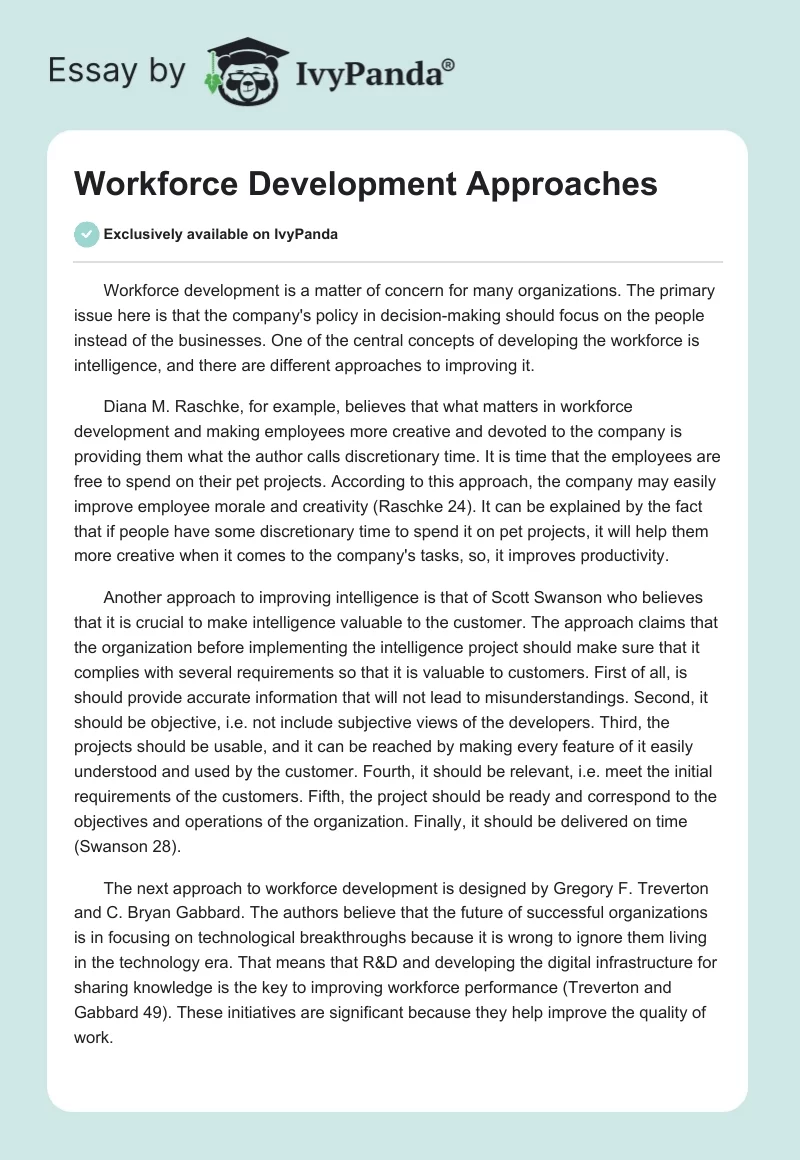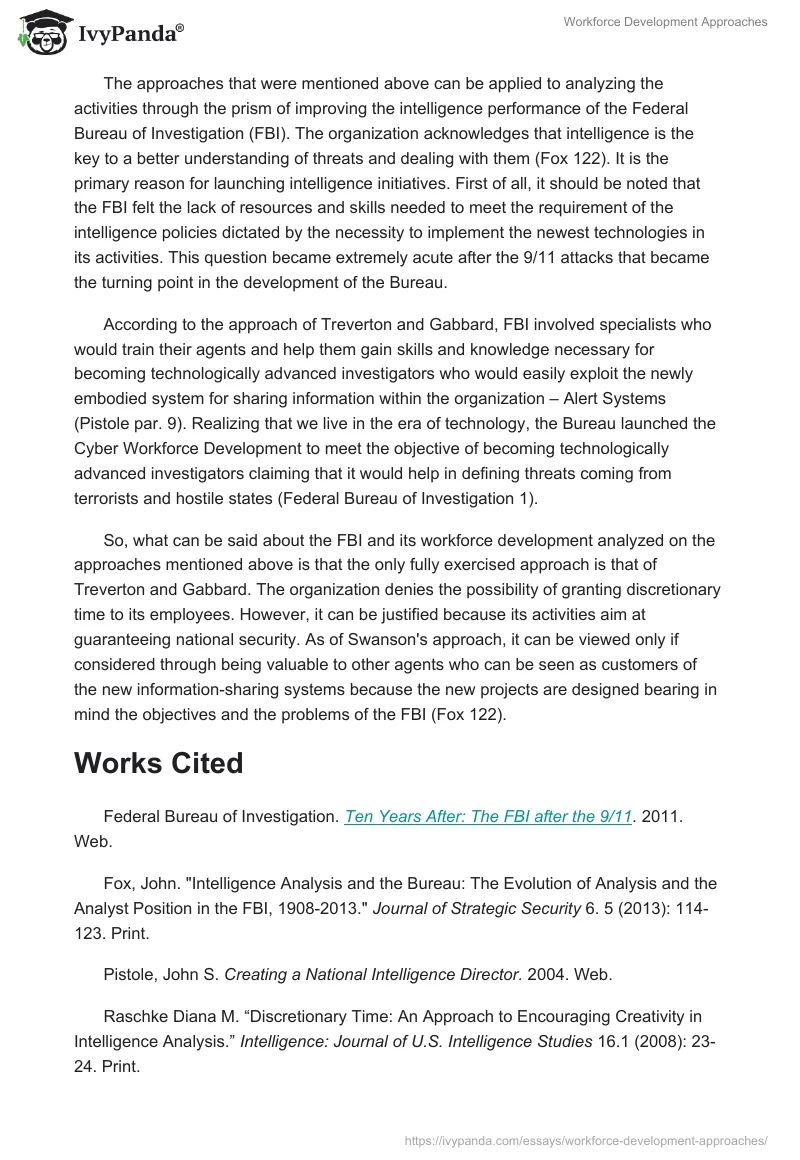Workforce development is a matter of concern for many organizations. The primary issue here is that the company’s policy in decision-making should focus on the people instead of the businesses. One of the central concepts of developing the workforce is intelligence, and there are different approaches to improving it.
Diana M. Raschke, for example, believes that what matters in workforce development and making employees more creative and devoted to the company is providing them what the author calls discretionary time. It is time that the employees are free to spend on their pet projects. According to this approach, the company may easily improve employee morale and creativity (Raschke 24). It can be explained by the fact that if people have some discretionary time to spend it on pet projects, it will help them more creative when it comes to the company’s tasks, so, it improves productivity.
Another approach to improving intelligence is that of Scott Swanson who believes that it is crucial to make intelligence valuable to the customer. The approach claims that the organization before implementing the intelligence project should make sure that it complies with several requirements so that it is valuable to customers. First of all, is should provide accurate information that will not lead to misunderstandings. Second, it should be objective, i.e. not include subjective views of the developers. Third, the projects should be usable, and it can be reached by making every feature of it easily understood and used by the customer. Fourth, it should be relevant, i.e. meet the initial requirements of the customers. Fifth, the project should be ready and correspond to the objectives and operations of the organization. Finally, it should be delivered on time (Swanson 28).
The next approach to workforce development is designed by Gregory F. Treverton and C. Bryan Gabbard. The authors believe that the future of successful organizations is in focusing on technological breakthroughs because it is wrong to ignore them living in the technology era. That means that R&D and developing the digital infrastructure for sharing knowledge is the key to improving workforce performance (Treverton and Gabbard 49). These initiatives are significant because they help improve the quality of work.
The approaches that were mentioned above can be applied to analyzing the activities through the prism of improving the intelligence performance of the Federal Bureau of Investigation (FBI). The organization acknowledges that intelligence is the key to a better understanding of threats and dealing with them (Fox 122). It is the primary reason for launching intelligence initiatives. First of all, it should be noted that the FBI felt the lack of resources and skills needed to meet the requirement of the intelligence policies dictated by the necessity to implement the newest technologies in its activities. This question became extremely acute after the 9/11 attacks that became the turning point in the development of the Bureau.
According to the approach of Treverton and Gabbard, FBI involved specialists who would train their agents and help them gain skills and knowledge necessary for becoming technologically advanced investigators who would easily exploit the newly embodied system for sharing information within the organization – Alert Systems (Pistole par. 9). Realizing that we live in the era of technology, the Bureau launched the Cyber Workforce Development to meet the objective of becoming technologically advanced investigators claiming that it would help in defining threats coming from terrorists and hostile states (Federal Bureau of Investigation 1).
So, what can be said about the FBI and its workforce development analyzed on the approaches mentioned above is that the only fully exercised approach is that of Treverton and Gabbard. The organization denies the possibility of granting discretionary time to its employees. However, it can be justified because its activities aim at guaranteeing national security. As of Swanson’s approach, it can be viewed only if considered through being valuable to other agents who can be seen as customers of the new information-sharing systems because the new projects are designed bearing in mind the objectives and the problems of the FBI (Fox 122).
Works Cited
Federal Bureau of Investigation. Ten Years After: The FBI after the 9/11. 2011. Web.
Fox, John. “Intelligence Analysis and the Bureau: The Evolution of Analysis and the Analyst Position in the FBI, 1908-2013.” Journal of Strategic Security 6. 5 (2013): 114-123. Print.
Pistole, John S. Creating a National Intelligence Director. 2004. Web.
Raschke Diana M. “Discretionary Time: An Approach to Encouraging Creativity in Intelligence Analysis.” Intelligence: Journal of U.S. Intelligence Studies 16.1 (2008): 23-24. Print.
Swanson, Scott. “Defining Intelligence Requirements: What Is the Question?” Competitive Intelligence Magazine 8.6 (2005): 27-30. Print.
Treverton, Gregory F., and C. Bryan Gabbard. Assessing the Tradecraft of Intelligence Analysis. Santa Monica, California: RAND Corporation, 2008. Print.


